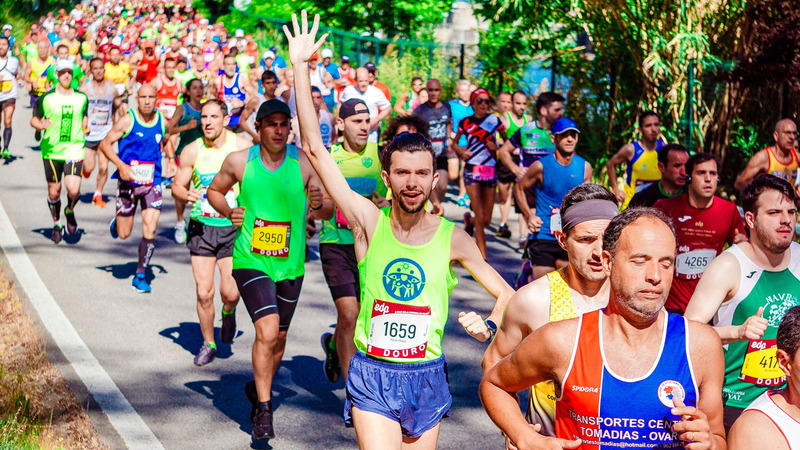Building Speed and Endurance – How to run faster, longer

If you’re like us, you like running. At Cascade Relays, we’re all about the joys of long-distance running, and we’re always looking for ways to up our game. Here’s some
tips for how to improve your speed and endurance, so you and your team can reach the finish line (and Beer Garden) sooner.
Whether training for a marathon, half-marathon, Cascade Relay’s epic overnight relay, Cascade Lakes Relay, or one of our awesome one-day Beer Chases, training your body to maintain a fast pace over a long range is challenging. You may have read about different training regimens that promise to up your speed over long distances, but the tried-and-true approach remains the same: consistent weekly runs that build in distance and pace. Designed to gradually increase your distance and push your speed, these regimens typically suggest a few shorter weekday runs and one long weekend run that gets progressively longer each week. For example, you might take a 3 mile run three times a week, then a 6 mile run on the weekend. Each week you might add one mile to your weekend run, until your reach your distance goal. While you are working on your endurance, you may temporarily put speed training to the side. In fact, while working to increase your distance, it is advisable to slow your down your running rate. Over time, as your endurance improves, you will be able to bring your speed back up.
While adding miles will help you develop your endurance, scaling back mileage goals can allow you to focus on speed. During your shorter weekday runs, consider incorporating interval training in order to develop your speed. For interval training, warm up with a jog for 10 minutes, and then run at a fast pace for two to five minutes. Follow your speed burst with an equal recovery period at a slow or moderate pace, and repeat this cycle four to six times. A different interval training regimen might involve 20 seconds of high-intensity running followed by 10 seconds of recovery, repeating this pattern seven or eight times. Speed burst training can be done with hills as well; for hill training, run as hard as you can up the hill and then jog back down, repeating this pattern several times.
If you focus your weekend runs on building distance, you will be able to concentrate on speed training during these shorter “recovery” weekday runs. By devoting your weekend run to the slow burn of endurance training, you will have the energy to focus on improving speed during your shorter runs. Even if it sometimes doesn’t feel like it, endurance and speed go hand-in-hand; as you build your strengths in one area, the other will improve as well.
The number one tip for improving both your speed and your endurance is to always listen to your body. Remember to pay attention to how you are feeling- both when you’re running and when you’re not- and adjust your regimen accordingly. Use common sense, and heed your body when you feel you need a rest day. You can always run again tomorrow!
At Cascade Relays, we love running. We know you do too. If you’re ready to join us on one of our unique, scenic, and awesomely enjoyable courses, check us out at






